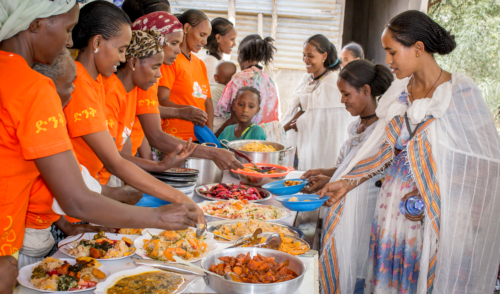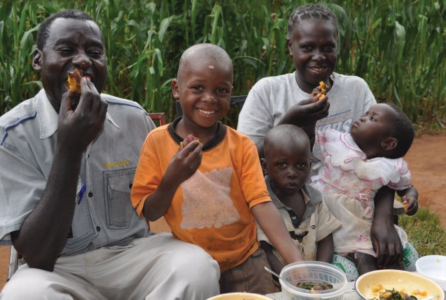
Potato, tomato, pepper, and eggplant or aubergine are key food security and commercial crops. Making their genetic diversity more widely available will support the livelihoods of farmers and other enterprises around the world. This project aims to streamline access to the extensive genetic resources of these crops.

Background
Preserving, characterizing and using the genetic diversity of important food crops and their wild relatives is vital to ensure the food and nutritional security of future generations. Genetic variability within the key solanaceous crops and their wild relatives is currently held in genebanks around the world, with little information available on the extent of duplication, date and place of collection, pedigree and distribution status of the accessions. This makes it difficult for plant breeders to source the genes needed for local crop improvement programs. However, recent advances in sequencing and information technology have reduced the cost of cataloguing and storing genetic data, making it possible to share information more widely. This should help scientists accelerate the genetic discovery of novel traits in key species and use these in their crop improvement programs.
This project, known as G2P-SOL, focuses on potato, tomato, pepper, and eggplant or aubergine, the most important solanaceous food crops. It brings together the major European and international germplasm repositories with public and private institutions active in genomics, phenotyping and breeding of these crops. By harnessing the available biodiversity, and using modern data analysis tools, the project aims to link the genetic code of these crops with the traits that improve productivity and adaptation to environmental stresses. Making this information more accessible will increase awareness of available biodiversity and stimulate its use in breeding programs, resulting in more diverse production chains. This will ultimately benefit farmers and other stakeholders by enhancing access to genetic resources for agricultural diversity and global food security.
Objectives
- Securing of the genetic resources of the key solanaceae by building a network of repositories for germplasm conservation and a gateway for presenting information in a unified and user-friendly way.
- Assessment of the genetic relationships, levels of diversity and extent of duplication in the collections, followed by the establishment of worldwide core collections.
- Incorporation of useful traits from wild relatives into elite germplasm and making it available to end-users (plant breeders and farmers).
- Open access to and broad dissemination of all information generated during the course of the project.
Approach
The concept underlying this project is that genetic diversity is best preserved when the germplasm is widely available and employed in agriculture, and when stakeholders are familiar with the tools used to preserve and access germplasm. This means they need access to information on available diversity, phenotypes and beneficial agronomic traits. The project takes a partnership approach—building on previous experience gained in European Union projects, such as sequencing the tomato genome. Synergies with ongoing international solanaceae projects will also be exploited. The Global Crop Diversity Trust is a key partner, which is already working on unlocking the potential of crop diversity stored in genebanks around the world.
The project will describe the phenotypes and traits of current collections in common terms and house the information in an open-source software platform. It will promote accessibility of genetic resources within the framework of the International Treaty on Plant Genetic Resources for Food and Agriculture and the Nagoya Protocol on Access and Benefit Sharing, thereby ensuring the fair and equitable sharing of benefits.
Expected outcomes
The economic impacts are likely to be significant, bearing in mind that solanaceae are the second most important family of food crops after cereals, with an annual global production value of around EUR 180 billion. Public sector breeders and small-scale enterprises will be the primary beneficiaries, with enhanced access to genomic information and pre-breeding materials. The project is likely to create new business opportunities for innovative enterprises.
More extensive use of genetic resources by producers will contribute to food security by making crops less vulnerable to environmental stresses. Environmental impacts will, therefore, include reduced use of pesticides, fungicides, etc. due to breeding varieties with better resistance to pests, diseases and adverse climatic conditions. The extensive collections held by the International Potato Center (CIP) and the World Vegetable Center, which contain extensive sources of resistance, will contribute to this outcome.
Social impacts relate to better prices and price stability for smallholders who rely on solanaceae as cash crops. Increasing consumer awareness on biodiversity is influencing buyers to look for local or traditional varieties and the project will make additional diversity more widely available. In addition, the current collections will benefit from better management, conservation, characterization and evaluation of their genetic resources. This will lead to increased transfer of genetic material into breeding programs and farming practices through the identification of useful traits.
Key achievements by July 2019
| Collection and curation of existing passport and phenotypic data for approximately 56,000 accessions and uploaded to the G2P- SOL gateway. |
| Completion of the genotyping of over 39,000 genebank accessions/pre-breeding lines, allowing the correct identification of accessions. |
| Establishment of the bioinformatic pipelines for the analysis of molecular data and analyses of population and phylogenetic structures of the crops |
| Screening and evaluation of diverse populations of each crop to identify genetic traits of interest, including diseaseand insect-resistance, etc. |
| Genetic markers are being used to follow the introgression of interesting genes and QTLs and pre-breeding into elite germplasm has started. Several potential novel traits have been identified for each crop for phase II of the pre-breeding. |
| Publication of data on the G2P-SOL gateway hosting plant data—interoperable with other databases and applications, and expected to be completely open access by early 2020. |
Contact
Hannele Lindqvist-Kreuze
CIP, Peru
h.lindqvist-kreuze@cgiar.org
Thanks to our donors



